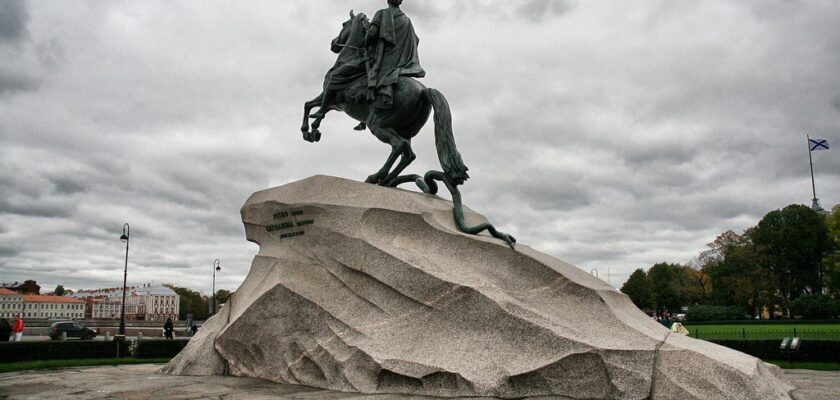Senate Square in St. Petersburg
Senate Square is one of St. Petersburg’s most poignant landscapes. Spacious and wide-open to the Neva River, the square is located in front of the former Senate and Synod building.
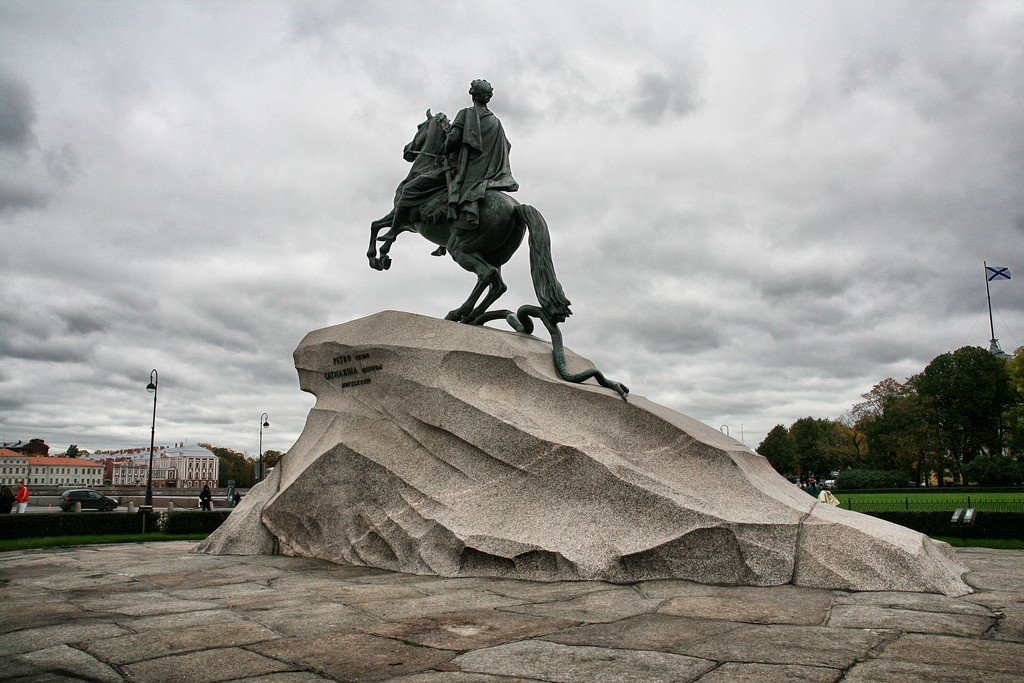
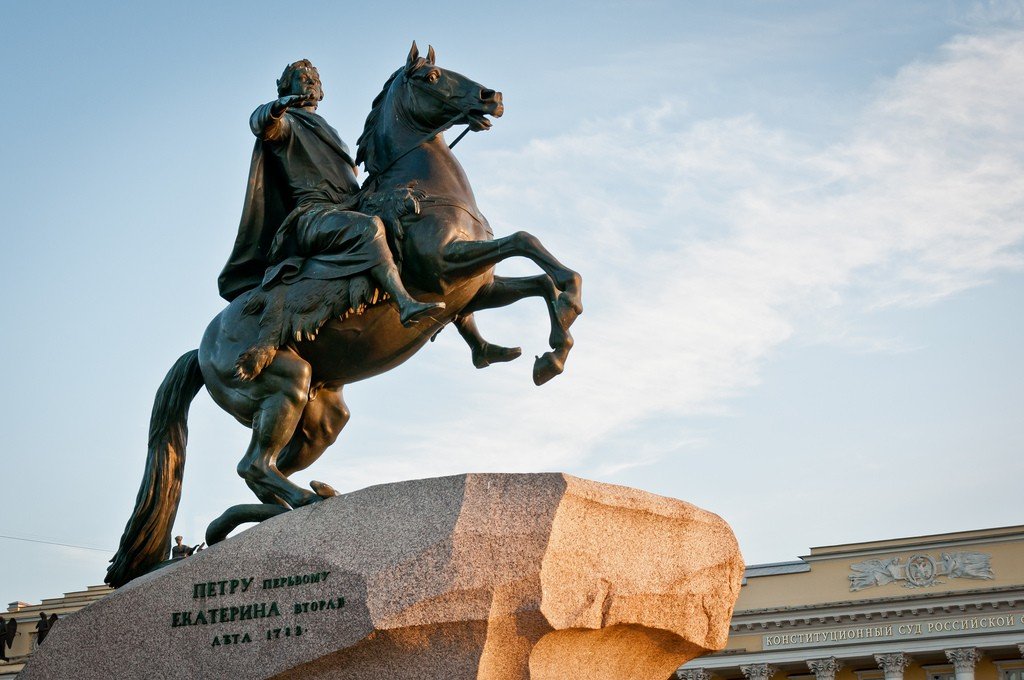
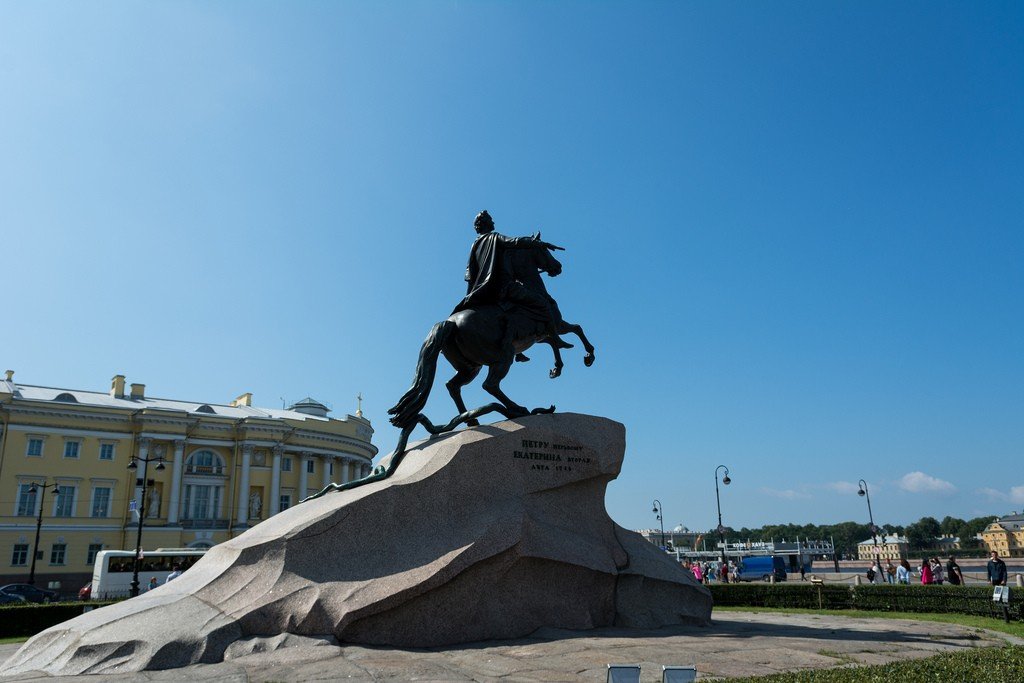
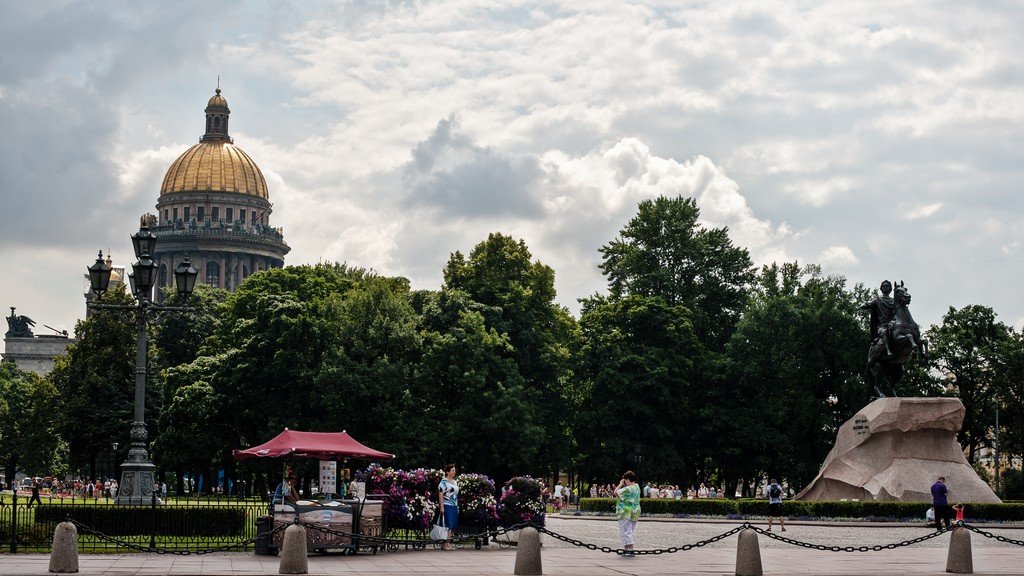
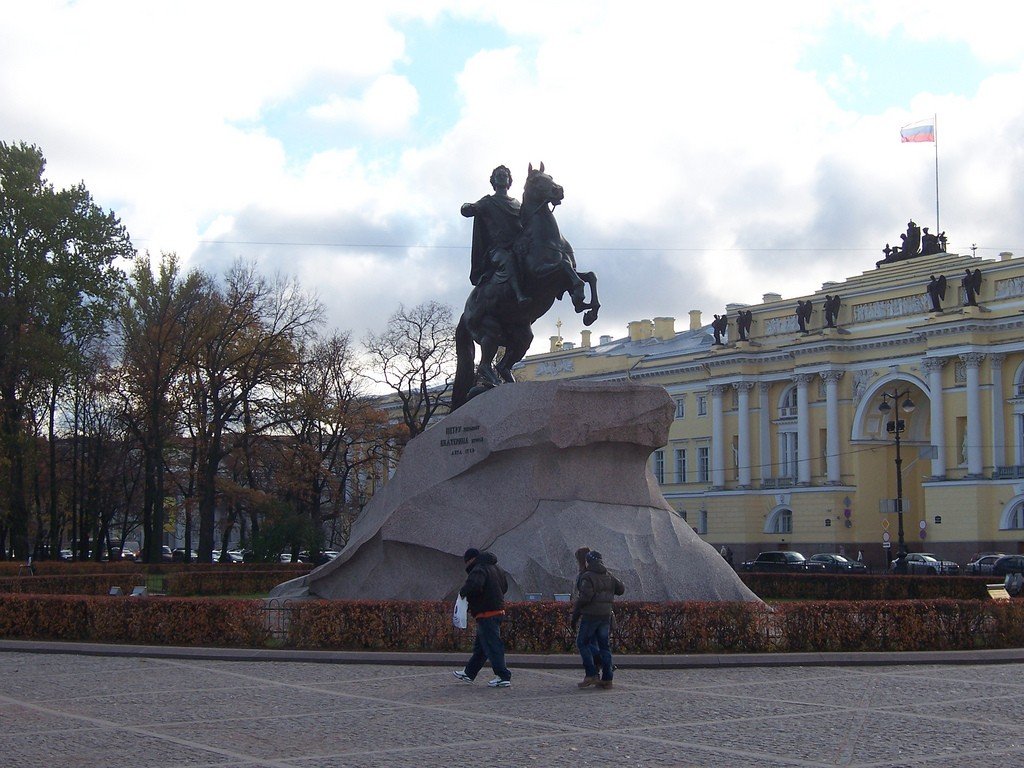
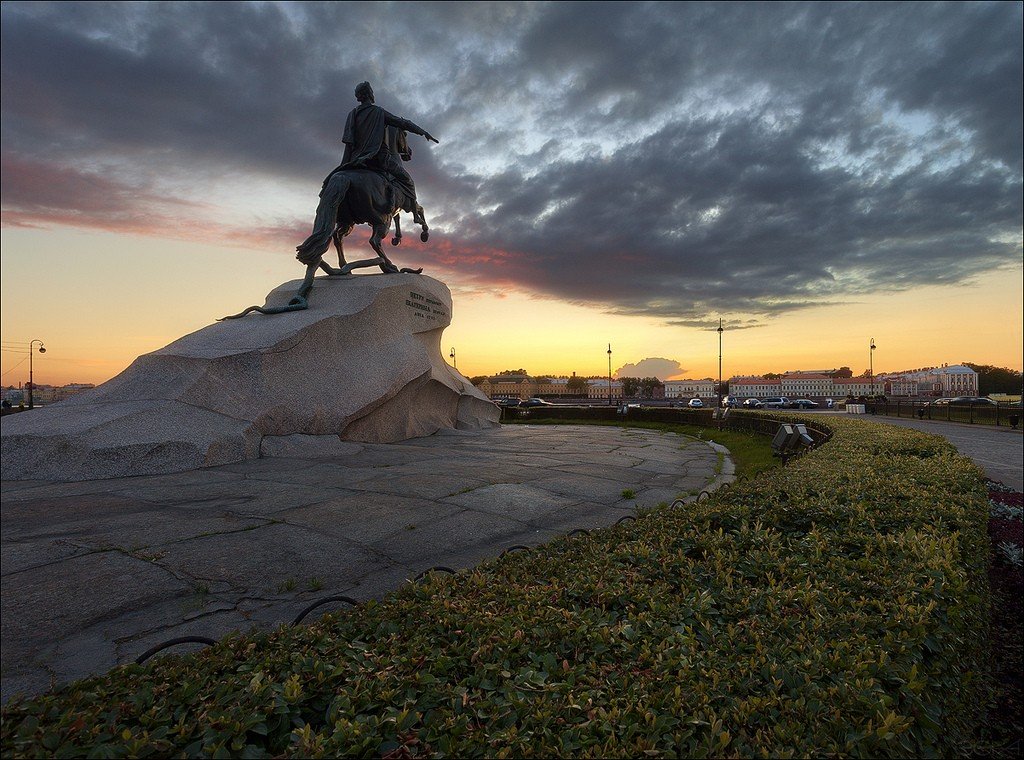
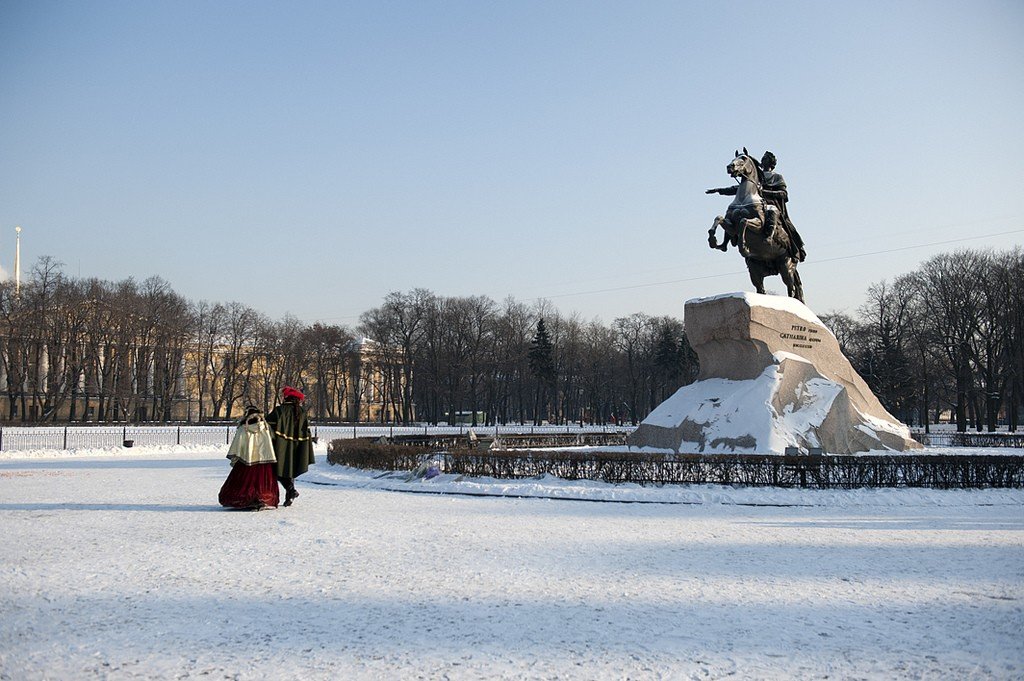
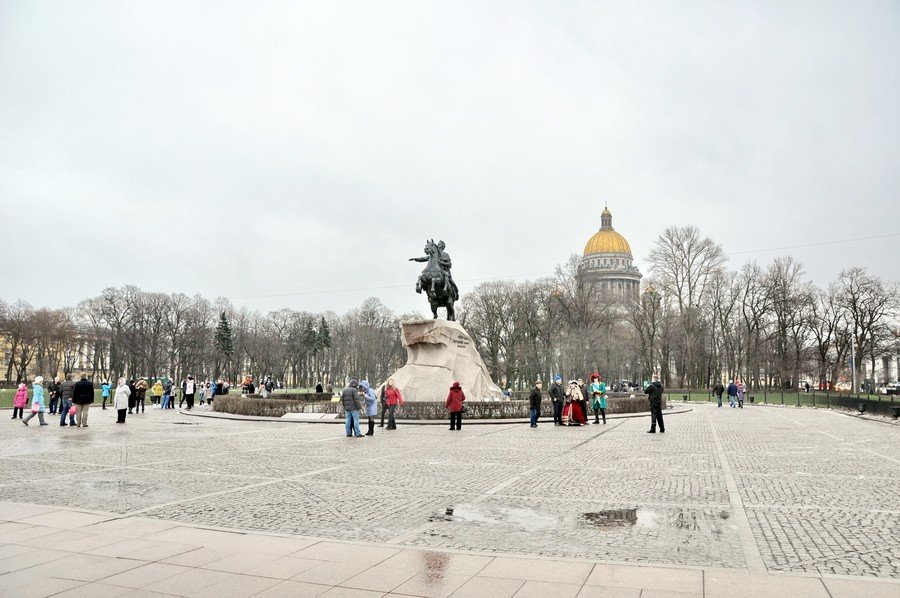
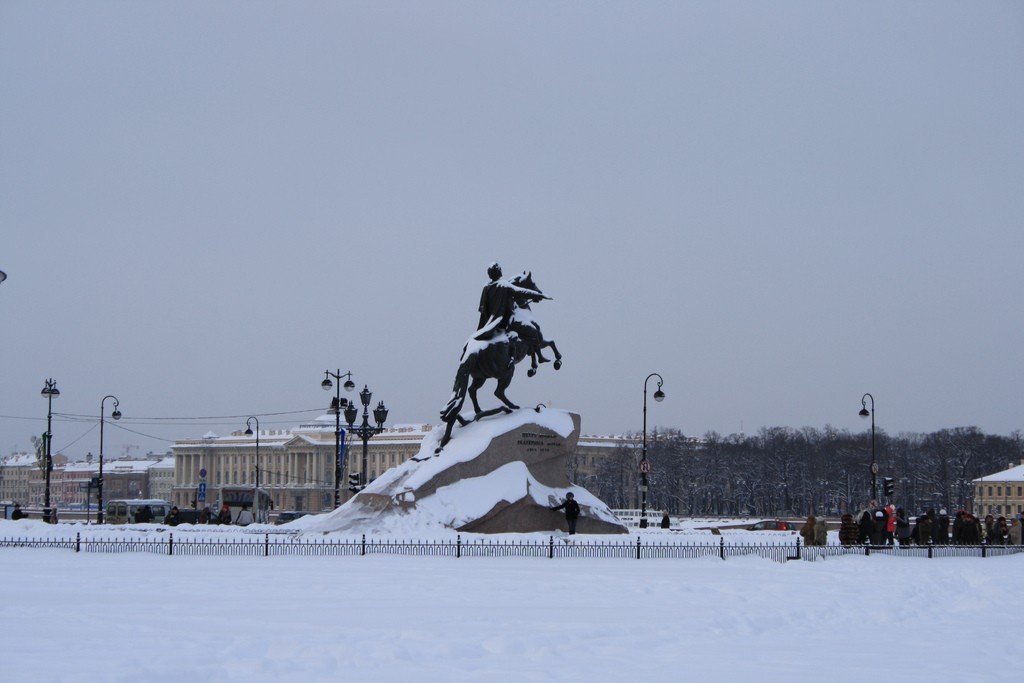
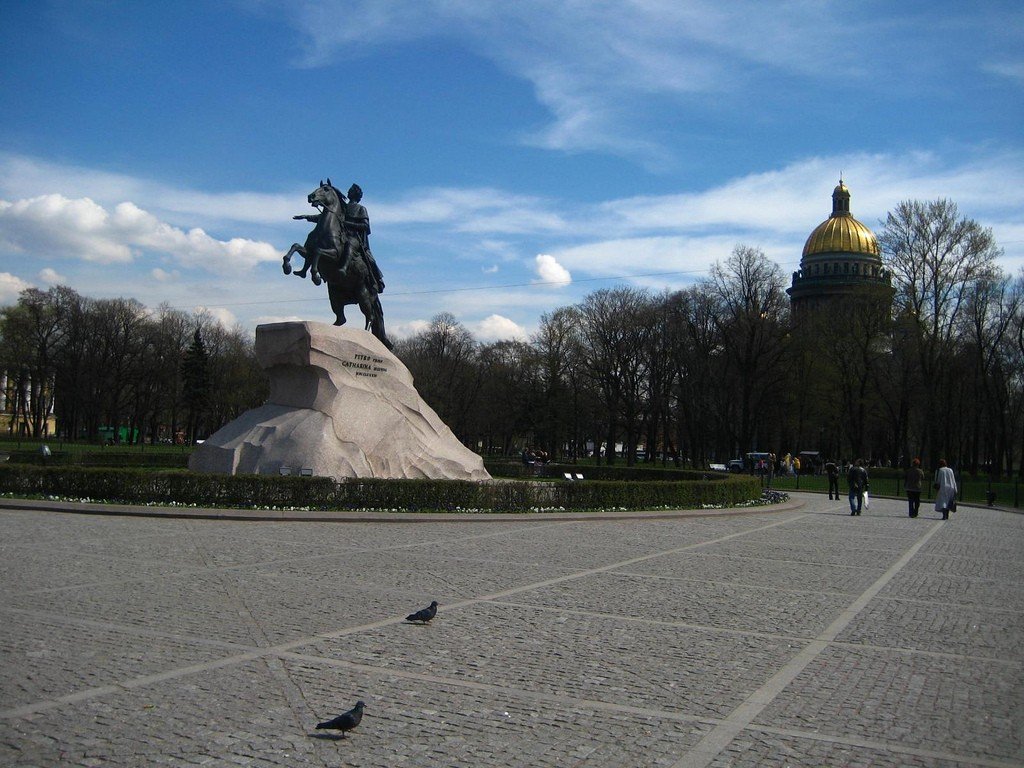
General information
The compositional center of Senate Square is the square with the monument to Peter the Great. This famous monument, one of the symbols of imperial St. Petersburg, was created by the French sculptor Etienne Falcone in 1782. The Emperor is depicted here as a rider, stopping a hot horse at a gallop and subduing it to his firm will. With a gesture of his right hand he asserts his victory, the triumph of the new Russia, and his horse tramples the snake, personifying the opponents of Peter’s reforms.
.
He is terrible in the surrounding gloom,What thought on his forehead!What power is hidden in him!And in this horse, what fire!Where do you go, proud horse?And where will you put your hoofs down?O mighty lord of fate!Art thou not so above the abyssOn a height, with a bridle of irondid you raise Russia to the ground?
Pushkin wrote about him.
.Interestingly, the model of Peter the Great’s head was created not by Falcone himself (he could not manage it), but by his student Marie Collot, who, wanting to help her teacher, made it overnight. The model itself can be seen in the Russian Museum on the landing of the second floor of the main staircase.
.
The moment of casting the statue was dramatic: the clay mold cracked from the red-hot bronze. Foundry master Emelyan Khailov, at the risk of his life, patched the crack and brought the casting to completion.
.
The base of the statue is a huge granite rock found in the forest near the village of Lakhta and called in the city “thunder-stone” because it was once cut by a lightning strike. According to legend, Peter the Great climbed it during his lifetime, inspecting the surrounding area. To transport the huge block to St. Petersburg, it was placed on chutes with bronze balls inside. For four months with the help of levers and ropes the block was pulled to the Gulf of Finland, at the same time trimming it. Then the “thunderstone” was transferred to a barge and delivered to St. Petersburg. Pay attention to its shape –
it resembles a sea wave and thus symbolizes the desire of the Russian Tsar to return for Russia an outlet to the sea. On the pedestal of the monument is a laconic inscription in Russian and Latin languages “To Peter the First – Catherine the Second”. Traditionally, newlyweds lay flowers to this monument and take pictures against its background..
The monument to Peter with the light hand of Alexander Pushkin everyone calls the Bronze Horseman, because that is how it was named in his famous poem. Many other poets, writers, artists, musicians were also inspired by this solemn monument. So, for example, Valery Bryusov wrote:
.In the frosty fog whitens Isaac,On a block of snow-covered Peter stands,And people pass in the afternoon twilight,as if they were watching him,You also stood here, splashed and foamy,Over the dark plain of the turbulent waves,And poor Eugene threatened thee in vain,seized by madness, full of rage…
.
The writer Nikolai Antsiferov called the Bronze Horseman the genius of place, the genius of the spirit of the Northern Capital, claiming that without the image of Peter the Great one cannot feel the face of St. Petersburg. And our contemporary Alexander Rosenbaum sings about him as follows:
.I will thank Falcone for a century:He has blessed us all with the hand of Peter …My sovereign on a blistering horse!I hasten to thee for music and word.
The history of Senate Square is closely connected with one of the most dramatic moments in the history of our country. On December 14, 1825, the famous Decembrist uprising took place here. A group of officers, supporters of political reforms, brought troops to this square, who refused to swear an oath to the new Emperor Nicholas I. Seizing the Senate, they wanted to veto his enthronement.
At this point, the monument to Peter, with whom everything advanced and progressive in Russia was associated, was in the center of the rebels’ carriage, and the Decembrist Alexander Bestuzhev symbolically sharpened his saber on its granite crest. However, the square was soon surrounded by troops loyal to the Tsar, the rebels were fired upon, and the rebellion was suppressed. Five leaders of the rebellion were sentenced to death, many others were sentenced to various terms of hard labor and exile after investigation. One hundred years later, under Soviet rule, Senate Square was renamed Decembrists Square. More recently, it was returned to its historical name.
.Previously, in front of the monument to Peter on Vasilyevsky Island led pontoon bridge over the Neva, but it burned just before the revolution from sparks that flew out of the pipe passing nearby tugboat. This sight was observed by the poet Alexander Blok, who noted it in his notebook. The bridge was never rebuilt again, only the granite descent to the river remains.
From the east, Senate Square is bounded by the huge yellow building of the Admiralty, the first Russian shipbuilding yard on the Baltic. The Admiralty was laid by the command and personal pencil sketches of Peter the Great, about which on November 5, 1704 in the tsar’s marching journal was made an entry: “The Admiralty House was laid and had fun in Austeria”. To work at the shipyard all over the country hired “for shipbuilding hunting carpenters”. Timber for ships was brought from the Volga, local trees were also used.
The first ship – an 18-gun bombardier ship was launched in 1706. The launching of the ship was always a celebration – guns saluted, music was played, the shipwright received an award. The Tsar attached great importance to the development of the Russian fleet. He liked to repeat that the ruler “who has one army has one hand, and who also has a fleet has two hands.”
.
By the end of Peter’s life, the Admiralty had joined the ranks of the major European shipyards. The English envoy to St. Petersburg Jeffries wrote to London: “Ships are built here no worse than anywhere else in Europe”. During the lifetime of the city’s founder, more than 40 ships were built at the Admiralty Shipyard, and about 300 ships were launched from here. Pushkin’s contemporary Nikolai Turgenev said on this occasion: “Peter created a fleet on which we arrived from the land of barbarism to the land of education.”
.
The Admiralty was both a shipyard and a fortress, holding the fairway of the Neva at gunpoint. The tower above the main entrance to the Admiralty housed the Admiralty Board, the highest governing body of the Russian Navy, where the Tsar himself sat with the admirals. He visited the shipyards daily and spent a lot of time there. Meetings of the Collegium, as a rule, lasted until 11 o’clock, when rising at five in the morning, the Tsar, according to a long-standing habit, reinforced himself with anisovka. The admirals gladly followed his example. Since then, pre-dinner drinking has been called “admiral’s hour” or “admiral’s noon.”
Peter’s Admiralty was large (which is natural, as several ships were built there at the same time), but not too expressive and beautiful. Therefore, in the early 19th century it was rebuilt according to the project of Russian architect Andreyan Zakharov. Having preserved the previous layout of the building, Zakharov gave it a completely new – light and harmonious – look. Its 72-meter-high gilded spire was crowned with a weathervane, which became one of the main symbols of St. Petersburg. “…And bright is the Admiralty Needle” – so Pushkin wrote about this very spire.
.
This grandiose building embodies the idea of Russia’s greatness as a maritime power. Its facade is richly decorated with sculptures and bas-reliefs, allegorically glorifying the Russian navy created by Peter. Unfortunately, not all the sculptural decoration of the Admiralty has been preserved. In the second half of the XIX century. at the request of the clergy removed “obscene pagan figures” that decorated the pavilions. On the empty pedestals appeared anchors and small cannons with cannonballs, which have survived to this day.
.
In the 19th century, the Admiralty building was transferred to the School of Ship Architecture, from which the Naval Engineering Institute, which is still located here today, traces its history, so here you can often meet young people in naval uniforms – future specialists in nuclear submarines.
.The Admiralty is the architectural center of the city, from which, according to Peter’s plan, three beams diverge: Gorokhovaya Street in the center. Nevsky and Voznesensky avenues on the sides. Forming the so-called St. Petersburg trident, these streets unite around themselves the main city squares – the Palace Square, St. Isaac’s Square and Senate Square.
.
From Senate Square to Labor Square stretches the Konnogvardeysky Boulevard, starting just behind the building of the Synod. There were barracks of the Life Guards Cavalry Regiment. By the way, it was in this regiment that Pechorin, the hero of Lermontov’s novel, served.
.